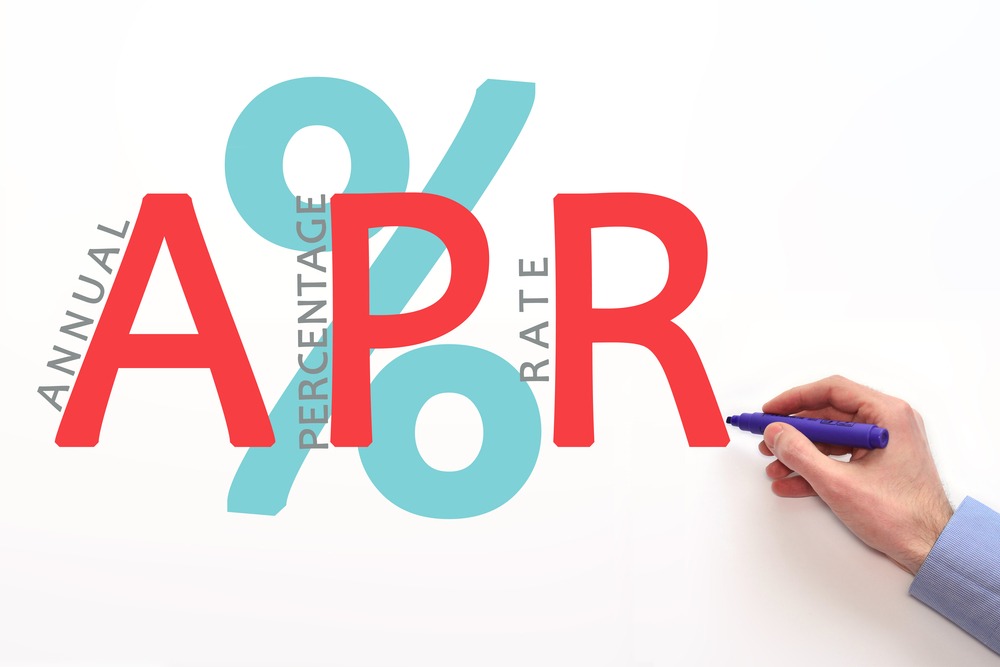APR and APY are two terms that often confuse people. They relate to how interest rates work for loans and savings accounts. Understanding the difference is crucial for managing finances wisely. APR affects borrowing costs, while APY influences earnings on savings. Knowing the difference helps in choosing loans, credit cards, and savings accounts wisely.
APR vs APY side by side comparison
What is APR?
APR stands for Annual Percentage Rate. It represents the yearly cost of borrowing money from financial institutions.
APR includes the amount of interest you will pay on a loan or credit card, along with any additional fees and charges, spread over a year.
This rate helps you understand the total cost of a loan or the expense of carrying a balance on a credit card.
Financial institutions use APR as a standard measure, guided by the Truth in Lending Act, to ensure transparency in lending practices. APR is crucial when comparing different loans or credit cards as it shows the true cost of borrowing.
What is APY?
APY stands for Annual Percentage Yield. It highlights the amount of interest you earn on savings accounts, checking accounts, or any interest-bearing investment over a year, taking into account the effect of compounding.
Compounding is when the interest you earn on your balance earns additional interest. Financial institutions offer APY on savings products to attract deposits by showing potential earnings.
APY provides a more accurate reflection of what you will earn in interest over a year than a simple interest rate because it includes how often the interest compounds. This measure helps savers and investors understand the true rate of return on their money.
APR vs APY: the main difference

While APR is about the cost of borrowing, APY (Annual Percentage Yield) relates to earnings on savings accounts and how compound interest boosts the rate of return.
APY takes into account how often interest compounds, making it higher than a simple APR in savings scenarios.
How is APY calculated?
Calculating APY (Annual Percentage Yield) involves understanding how compounding interest works over a year.
Compounding is when the interest you earn on a deposit or investment also earns interest in subsequent periods. Here’s a simplified formula to calculate APY:
APY is (1+r/n)n – 1, where r = period rate and n = number of compounding periods
Here’s a step-by-step process to calculate APY:
- Identify the Interest Rate: Find the annual interest rate of the account or investment (expressed as a decimal). For example, if the interest rate is 5%, you would use 0.05.
- Determine the Number of Compounding Periods: This is how often interest is added to the principal balance. Common periods include yearly, quarterly, monthly, or daily.
- Apply the Formula:Divide the annual interest rate by the number of compounding periods per year.
- Add 1 to this result.
- Raise this sum to the power of the number of compounding periods per year.
- Subtract 1 from the final result.
- Convert to Percentage: Multiply the final decimal by 100 to get the APY as a percentage.
You don’t need to be able to memorize that formula or use it to calculate APY on every compounding investment, because APY is the published yield on interest-bearing investments at banks, credit unions, and other financial institutions.
How Does an APR Work?
APR stands for Annual Percentage Rate. It represents the annual rate charged for borrowing money or earned through an investment. APR includes fees and costs associated with the transaction but does not account for compounding within the year.
How is APR calculated?

Calculating APR (Annual Percentage Rate) involves accounting for the annual rate of interest charged on a loan or provided by an investment, plus any additional fees or costs associated with the transaction, spread over the term of the loan.
Unlike APY, APR does not account for the effect of compounding interest within the year. Here’s a simplified approach to understanding APR calculation:
Identify the Interest Rate and Fees: Find the annual interest rate of the loan or credit product and identify all additional fees (such as origination fees, processing fees, or any mandatory service charges) that are part of borrowing.
Calculate Total Cost of Borrowing: Add the total amount of fees to the total amount of interest you will pay over the life of the loan. To find the total interest, you might use the loan amount, the annual interest rate, and the term of the loan.
Annualize the Total Cost: Divide the total cost of borrowing by the loan amount to get the rate, then adjust this rate to an annual figure if necessary, especially if the loan term is less than a year.
Convert to Percentage: Multiply by 100 to express the APR as a percentage.
Here is an example.
Suppose you take out a $10,000 loan with an annual interest rate of 5% and a one-year loan term. Additionally, there is a $100 origination fee.
Interest Paid: $10,000 loan * 5% interest rate = $500
Total Fees: $100 origination fee
Total Cost of Borrowing: $500 (interest) + $100 (fees) = $600
Rate: $600 / $10,000 = 0.06
APR: 0.06 * 100 = 6%
This means the APR, which represents the annualized cost of borrowing, including fees, is 6%.
Note that the exact calculation may vary based on the specific terms and fees associated with a loan or credit product, and some APR calculations might involve more complex formulas to account for different fee structures and compounding periods.
Example with a Mortgage
When you shop for a mortgage, lenders will quote an APR. It’s calculated by adding all costs of borrowing (interest rate, fees) and then dividing by the loan amount. It’s then converted into a percentage and annualized.
APR vs. What You Actually Pay

APR reflects the annual cost of a loan or credit card. However, the actual amount you pay depends on how the APR is applied to your balance and how often interest compounds.
APR vs. Interest Rate
While the interest rate is a part of APR, they’re not the same. The interest rate is the cost of borrowing the principal loan amount, while APR includes other fees and costs.
Why Is the APR Important?
APR provides a comprehensive view of the cost of borrowing. It’s essential for comparing different loans and credit cards as it measures the truth in lending.
What Affects Your APR?
Your APR can vary based on credit score, loan type, loan term, and the lender’s policies. Introductory APR offers can also affect the overall cost.
If you have a high yield savings account that compounds monthly, a 5% APY will earn more interest over a year than a 5% APR because of the compounding effect.
APR vs APY – FAQ
Which Is Better, APR vs APY?
For borrowers, a lower APR is better as it means less cost. For savers or investors, a higher APY is preferable since it implies more earnings.
What Is a Good APR Rate?
A “good” APR varies by loan type and market conditions. For credit cards, rates below the average range can be considered good.
What’s the Difference Between an Interest Rate and APY on a CD?
The interest rate on a Certificate of Deposit (CD) tells you the simple interest you’ll earn, while the APY includes compounding, showing the actual rate of return.
What Is 5% APY on $1000?
A 5% APY on $1000 means your investment will earn $50 in interest over one year, factoring in compound interest.
Is 30% APR Good?
No, 30% APR is considered high, especially for loans or credit cards, indicating expensive borrowing costs.
Why Is APR Higher Than APY?
APR isn’t necessarily higher than APY. Their comparison doesn’t directly apply as APR is used for loans (cost to borrow) and APY for savings (earnings), but APY can show higher returns on savings due to compounding.
















